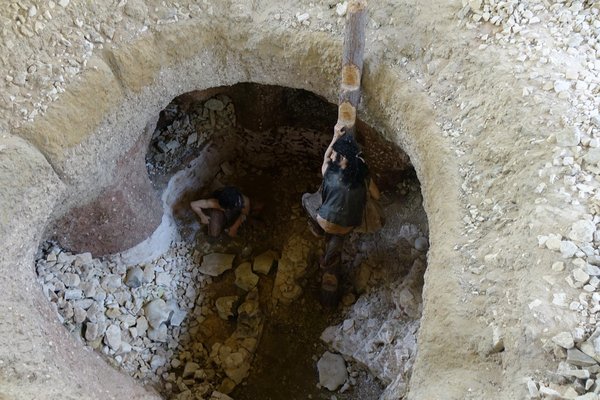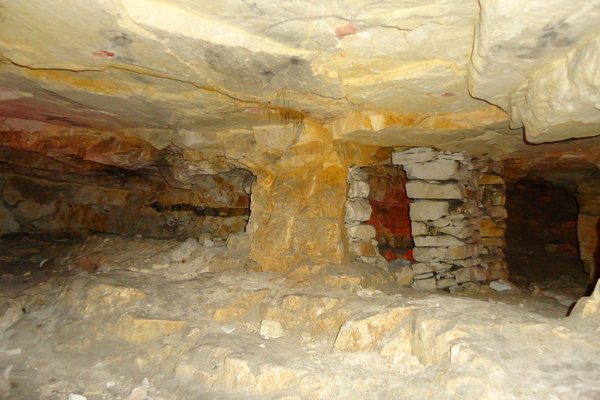Poland
Krzemionki prehistoric flint mines
The Krzemionki prehistoric striped flint mining region is a group of 4 mining sites dating back to from the Neolithic to the Bronze Age.
There are more than 4000 mine shafts known with depths of 9 meters deep, with wells measuring from four to twelve metres in diameter. The striped flint was used mainly for axe-making: its products have been found as far as 660km away.
Community Perspective: Guided tours are the only way to enter, and they are conducted well (also in German and English). The museum has only signs in Polish, though. Solivagant provides a comparison between Krzemionki and that other flint WHS, Spiennes. Jarek has shared details on how to visit on public transport (it’s ‘in the middle of nowhere’).
Site Info
Official Information
- Full Name
- Krzemionki prehistoric striped flint mining region (ID: 1599)
- Country
- Poland
- Status
-
Inscribed 2019
Site history
History of Krzemionki prehistoric flint mines
- 2019: Advisory Body overruled
- ICOMOS advised Referral, overturned after amendment of Hungary
- 2019: Inscribed
- Inscribed
- 2016: Revision
- Successor to former TWHS Krzemionki Opatowskie. Neolithic flint mine (2002-2006)
- Type
- Cultural
- Criteria
- iii
- iv
Links
- UNESCO
- whc.unesco.org
- Official
-
- krzemionki.pl — Archaeological Museum and Reserve Krzemionki
All Links
UNESCO.org
- whc.unesco.org — whc.unesco.org/
Official Website
- krzemionki.pl — Archaeological Museum and Reserve Krzemionki
Community Information
- Community Category
- Secular structure: Mines
Travel Information
Guided Tour Only
Reservation required
Recent Connections
-
Flint extraction
“the most completely preserved and whol…
-
Vistula
"Borownia Mining Field is located some… -
Uncovered using Lidar
"Pit-mined waste of clay and other sof…
Connections of Krzemionki prehistoric flint mines
- Individual People
-
-
Female Archaeologists
Gawroniec Settlement: "Excavation works were conducted by Zofia Podkowinska between 1947–1961." (Nomination file, p. 213)
-
- Geography
-
-
Vistula
"Borownia Mining Field is located some 7.25 kilometres down-strike (southeast) from Krzemionki Opatowskie Mining Field. The north-western limit of the mining field lies immediately to the east of the Kamienna River and its floodplain, separated by a steep 'river cliff' of 5 or 6 metres in height ." The Kamienna is a left tributary of the Vistula. (Nomination file, p. 74)
-
- Trivia
-
-
Subterranean Cultural Sites
"The serial property illustrates diverse underground prehistoric mining structures comprising open-pit, niche-gallery, gallery, pillar-chamber and chamber mines (...)" (OUV) – "The underground visitor route, accessed via shafts, gives unparalleled access to workings with a diversity and combination of attributes that have remained almost unchanged for over 5,000 years, providing an unforgettable experience and educational opportunity to explore, directly, the perfectly preserved material traces of everyday life of prehistoric European communities." (Nomination file, p. 180)
-
- History
-
-
Neolithic age
mining sites dating from the Neolithic and the Bronze Age (c. 3900-1600 BCE) (AB ev) -
Bronze Age
mining sites dating from the Neolithic and the Bronze Age (c. 3900-1600 BCE) (AB ev) -
Historical Food Remains
"Traces of miners' food, or perhaps ritualistic deposits, have been encountered: the jawbone of a wild boar, horse teeth, and others." (Nomination file, p. 65) – "The principal activity of the inhabitants of the Gawroniec settlement, however, was agriculture and husbandry, which is indicated by the pit-granaries containing grain remains (...)." (Nomination file, p. 213)
-
- World Heritage Process
-
-
Industrial Landscapes
"A diverse range of mine types are also identified with different surface expressions in a remarkably intact anthropogenic surface that presents a rare prehistoric industrial landscape of shaft depressions and up-cast waste, remnants of flint workshops, miners' camps and communication routes." – Criterion iv: "Krzemionki Prehistoric Striped Flint Mining Region represents an exceptional type of Neolithic mining landscape". (OUV)
-
- Human Activity
-
-
Flint extraction
“the most completely preserved and wholly readable socio-technical system of prehistoric underground flint mining and processing and illustrates the greatest range of prehistoric flint mining techniques known in a single property” (OUV statement)
-
Pictographs
"Neolithic charcoal drawing", "There are forty pictograms and most of them depict irregular black signs -it is possible these are traces of torches which were rubbed against the wall after having burnt out. But it is worth noting that a few pictograms are not just random marks ... the best-known pictogram from Krzemionki is an anthropomorph" (see link)
-
- WHS on Other Lists
-
-
Natura 2000
"The State Party indicates that almost the whole of the property also benefits from protection at national and European level as a Natura 2000 site. Only a very small part of the mining field in the south-east is excluded from this protection." (AB Ev) -
Cultural WHS set within an IUCN recognised protected area
Krzemionki Opatowskie - IUCN Category IV (Terrestrial and Inland Waters Protected Areas)
-
- Timeline
-
-
Built in the 4th millennium BC
dating from the Neolithic to the Bronze Age (about 3900 to 1600 BCE)
-
- Science and Technology
-
-
Mines which can be visited underground
Flint / via a spiral staircase -
Experimental Archaeology
There is an "interpretive reconstruction of a Neolithic village", which offers, among other things, an "Interpretive reconstruction in a niche-gallery mine". "(...) one can find both reconstructions of houses from the Funnel Beaker culture and the Globular Amphora culture, dating back to the 4th and 3rd millennium BCE, as well as from the Mierzanowice culture from the early Bronze Age (the three principal communities associated with Krzemionki striped flint mining)." (Nomination file, p. 292, 297) -
Uncovered using Lidar
"Pit-mined waste of clay and other soft material, even if tipped, would be prone to rapid denudation and leave little trace in the topography today. They are, however, impressive when surveyed by LiDAR, especially when visually and technically stripped of forest cover and viewed in a large group." – "The form and scale of the mining fields is highly authentic, being proven by a variety of archaeological investigations, including advanced geophysics and Lidar." (Nomination file, p. 71, 180) -
Archaeological potential
"The majority of the mining fields are left unexcavated." (OUV) – "(...) the Borownia and Korycizna sites have not yet been subjected to thorough excavations" – "The other two mining sites (Borownia and Korycizna) have not been thoroughly investigated, unlike Krzemionki, apart from an initial excavation at Borownia in 2017. The Gawroniec settlement site was partially excavated from 1947 to 1961." – "The archaeological research at Borownia, in 2017, uncovered two shafts. The geophysical studies suggest the existence of underground structures that have not been excavated, as at Korycizna." (AB Ev) – "As a whole, the nominated Property presents a prehistoric industrial system with exceptional functional integrity and clear legibility. The potential for further discoveries is enormous." (Nomination file, p. 177) -
Recorded cultural discoveries
The early discovery of Krzemionki Opatowskie in 1922 enabled rapid identification of the nature of the site" (AB Ev) – "On 19 July 1922 Jan Samsonowicz, a geologist and palaeontologist (Polish Geological Institute) who was also working with Stefan Krukowski, discovered the Krzemionki Opatowskie Mining Field and recognised it as belonging to the Neolithic period." (Nomination file, p. 157)
-
- Visiting conditions
-
-
Guided Tour Only
Access via the visitor center requires participation in a tour of the exhibits and the underground mines. -
Reservation required
According to their website, they require advance notice that you're coming.
-
News
No news.
Recent Visitors
Visitors of Krzemionki prehistoric flint mines
- Adrian Turtschi
- Afshin Iranpour
- Alexander Barabanov
- Alexander Lehmann
- Antonio J.
- Argo
- Artur Anuszewski
- Atila Ege
- Carlos Sotelo
- Cezar Grozavu
- Cirene Moraes
- Clyde
- czesioszpachelka
- Dagmara
- Daniel Chazad
- del
- Dimitar Krastev
- Els Slots
- Eva Kisgyorgy
- George Gdanski
- Grzegorz Andruszkiewicz
- Harry Mitsidis
- henrik_hannfors
- Highlander
- Hubert
- Ivan Rucek
- Jakob F.
- Janina Lehmann
- Jarek Pokrzywnicki
- Jezza
- Jonas Kremer
- Jonas Martinsson
- KarenBMoore
- Kasia M.
- Krzysztof B
- Loic Pedras
- Luboang
- Luis Filipe Gaspar
- Maciej Gil
- Maciej Gowin
- Małgosia Łupicka
- Martina Rúčková
- Mateusz
- Michael Ayers
- nan
- Nihal Ege
- Patrik
- Philipp Peterer
- Piotr Wasil
- Rafał Kałczuga
- Randi Thomsen
- Remigiusz
- Roman Bruehwiler
- Roman Raab
- Solivagant
- Stanislaw Warwas
- Svein Elias
- Szucs Tamas
- Tamara Ratz
- Tarquinio_Superbo
- Thomas Buechler
- Thorben
- triath
- Tsunami
- usagi1974
- Walter
- Wojciech Fedoruk
- YaroMir
- Złoty Tłok Czesław
- Zoë Sheng
Community Reviews
Show full reviews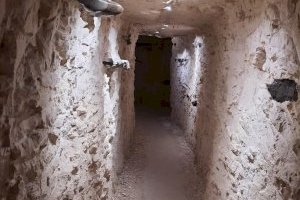
First things first, it's Q3 2021 and the tunnel is open again. With it the site is fully accessible for visitors. I had waited for more than a year to complete Poland again; Covid travel restrictions may have also played a role.
The tunnel links multiple mines and follows the flint stone layer upwards, giving you a good understanding of the spread and rather limited depth of flint stones. It's assumed that the flint stones formed as a ground layer of a lake, so the flint stone layer tilt upwards. Supposedly, the deeper layers are of better quality. Side note: Flint stone mining was a temporary activitiy. The soil of the area was too bad for permanent habitation.
While technically, you can tick the site by roaming around the premises or the other locations (many open pits remain and are visible), you would be missing out on the key feature of the site: The small painting of a woman giving birth (?!). I am not sold on the giving birth part, but it sure was nice to see down in the tunnel.
In comparison to Spiennes which gives you an idea of the narrowness of a flint stone mine, Krzemionki feels more explorable and gives you a better overview, especially in combination with the onsite museum, consisting of a multi media part and an outdoor museeum.
Getting There
I came by car with a friend, but had investigated public transport options as a fallback. The …
Keep reading 1 comment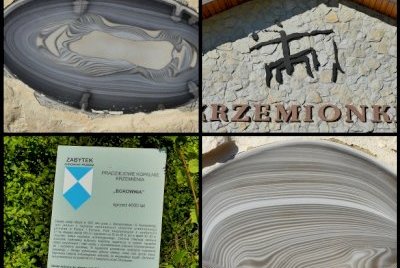
I visited this WHS in August 2020. Due to the works being carried out till 2021 to upgrade the Krzemionki tourist route underground experience and make it more accessible, I couldn't 'enjoy' the full experience, but based on photos, videos and other reviews, the only value added I missed when compared to the Spiennes WHS, was the pictogram/rock art, used as the museum's logo.
Thanks to Martina and Ivan's previous visit and help, and to avoid a forecast thunderstorm in the Zamosc area, I decided to go ahead and try to have a look at what's on offer at all 4 locations. The GPS coordinates on the official UNESCO website are precise although you'll have to zoom in and out of your GPS to make sure you avoid unpaved roads, pathways or non-existant roads. I started with the Krzemionki Museum and Archaeological Reserve which is a well-developed gateway to just one of the 4000 prehistoric mines of striped flint near Ostrowiec Swiezokrzyski. The WHS is unique mostly due to the well-preserved mining waste piles and shaft depressions, which despite thousands of years remained almost unchanged, even though most is covered by fast growing overgrowth, so much so that near the museum is a nature reserve with boardwalks.
In Krzemionki, all the techniques of obtaining flint can be observed, from the simplest cavities to large sophisticated mines, i.e. sophisticated for Neolithic and Early Bronze Age times. This complex of mines was only discovered in 1922 by a geologist and …
Keep reading 0 commentsAlexander Barabanov
Krzemionki prehistoric flint mines
Krzemionki prehistoric flint mines (Inscribed)
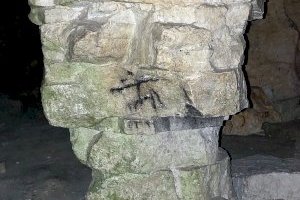
Visited this site in August 2019 during weekend trip to Poland. Visitor center is located in lovely rural setting, however the main entrance seems to be for administrative and the cash desk is located on the lateral side. There was no English tour available, so I joined Polish tour for 18 Zloty. While waiting for the tour it is possible to browse adjacent Archaeological museum, which only has explanation in Polish. There were many illustrations of shrimps and crabs at the information stands, so afterwards it was interesting to find out myself through internet the process of flint formation, in which indeed they played leading role.
The site seems to be quite popular among locals and approximately 20 people continued to the forest with the guide. Krzemionki is on the world’s largest concentration of flint mines with more than 4,000 prehistoric mines. On the route, there are first two covered restored mines with human figures of prehistoric people followed by the most interesting part beings, underground chamber mines. These were most advanced among different mine types and reached the depth of 9 meters. The tourist route is currently 465 meters long. It is full of black flint formations embedded in the white limestone. One of the highlights is prehistoric charcoal anthropomorphic drawing of a human figure near the exit from underground tunnel. This figure serves as the logo of Krzemionki. Some researchers support the opinion that this pictogram is a forgery (made by a student during internships in the …
Keep reading 0 commentsJarek Pokrzywnicki
Krzemionki prehistoric flint mines
Krzemionki prehistoric flint mines (Inscribed)
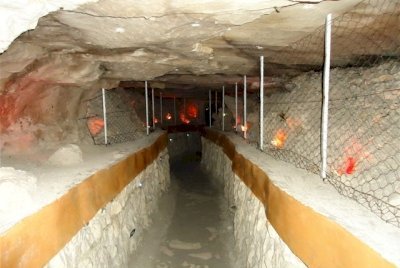
Site visited in early 90ties and revisited shortly after inscription (July 2019).
I must say I really like this place. Comparing to Spiennes it is better preserved and much more interesting. It is also well maintained and prepared for mass tourism. All that applies to main component (Krzemionki Opatowskie) - area located between villages Sudół and Magonie (coordinates 50.971817, 21.491227). It is a place where former Krzemionki village was located, now it is only museum and archeological reserve of former flint mining.
At first glance it may not be very spectacular. These only visible remnants of mining activities are just small mounds or holes in the forest. But the real treasure lies under the ground. This is fully preserved flint mine from Neolthic period including corridors cut in the limestone and chambers. As far as I know it is the only one in world (those at Spiennes are just individual shatfs not connected each to another). The main reason for its preservation was lack of human settlement in the area after the place was abandoned in early Bronze Age (around 1600 BC).
Some practicalities as of July, 2019: visit of archeological reserve and museum is possible only with a guide. Fees are not big comparing to other monuments (18 / 12 PLN normal discounted, which is approximately 4,25 / 2,8 EUR), the whole trip takes around one hour and includes 500 m underground walk. Be prepared to take some warm clothes with you as these galleries are …
Keep reading 0 comments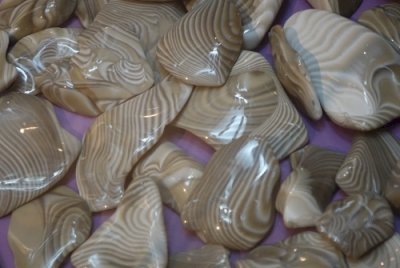
The Krzemionki Prehistoric Striped Flint Mining Region has been included in the List this year. ICOMOS in its evaluation had asked for a Referral, mostly because of the need for adequate protection of all its components and the implementation of the management plan. Outstanding Universal Value has been proven though, also compared to the already inscribed Flint Mines of Spiennes. So an inscription was no surprise. On my recent Pentecost trip to Eastern Poland I made a small detour between Warsaw and Zamosc to check out what Krzemionki is all about.
"Krzemionki" is the name of a former village, but not the name of the current location. The main site lies between the villages of Sudół en Magonie, 8km northeast of Ostrowiec Świętokrzyski. I drove there in 2.5 hours from Warsaw airport. Nowadays it is a wooded area, with some administration buildings and a grand parking. This Saturday afternoon though there were only a few cars. When I bought my entrance ticket (18 zloty / 4.20 EUR), an English-speaking colleague was quickly called for help by the cashier lady. He told me that a tour had just started with a Polish and German speaking guide. After confirming that German is OK for me too, and I could join them immediately.
Together with 4 Polish tourists and guide Kinga I walked further into the forest. Thousands of flint mines lie beneath the ground here. They can be recognized by small ‘dents’ in the landscape, a bit similar to bomb …
Keep reading 0 comments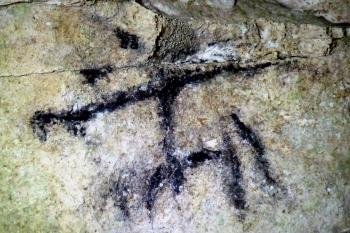
Back in Aug 2015, our visit to Spiennes had been enhanced by a talk from a Polish academic who was assisting with the ongoing excavations there and just happened to lecturing on “Flint mines in Poland” to a gathering of specialists that afternoon in the lecture hall at the Visitor Centre. We were invited to attend and began to realise just how much there was to know about this subject! Mention was made of the flint mine at Krzemionki and I mentally “pencilled in” an intention to visit it if I ever found myself in that part of Poland…… thus it was that we were there just over 2 years later in mid Sep 2017 at opening time!
The site is situated around 8kms from the industrial city of Ostrowiec Swietokrzyski. We were travelling by car in a reasonably straight line between Bialowieza (c300kms NE) towards Krakow (still another 170kms SW) - and currently there isn’t a single WHS in this part of Poland between the 2! Apart from Warsaw and Torun, Poland’s WHS are mainly scattered around its periphery and there seems little reason for non Polish tourists to visit the area other than to “pass through”. We were somewhat surprised to find a large modern visitor centre set in this nondescript countryside. It turned out that over half the visitors to the site are Polish school children. The site also includes a “Nature Park” and a reconstructed “Stone Age Village” and is linked with an …
Keep reading 0 comments
